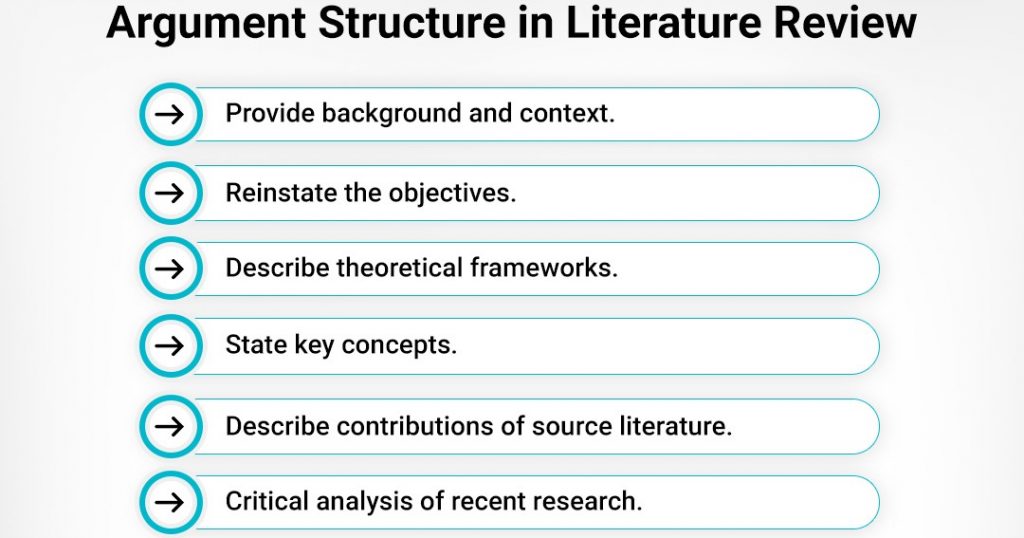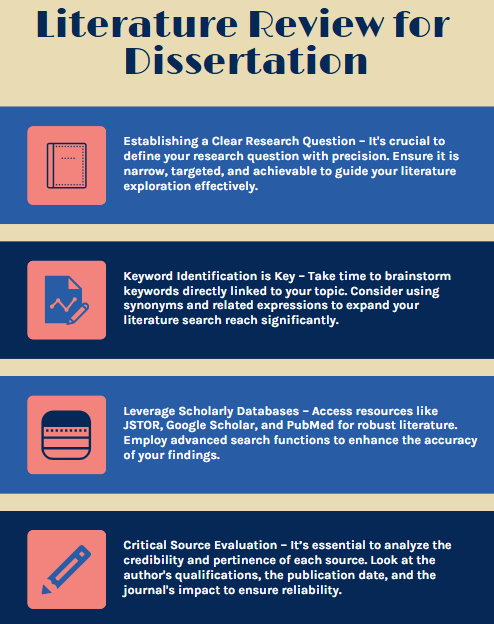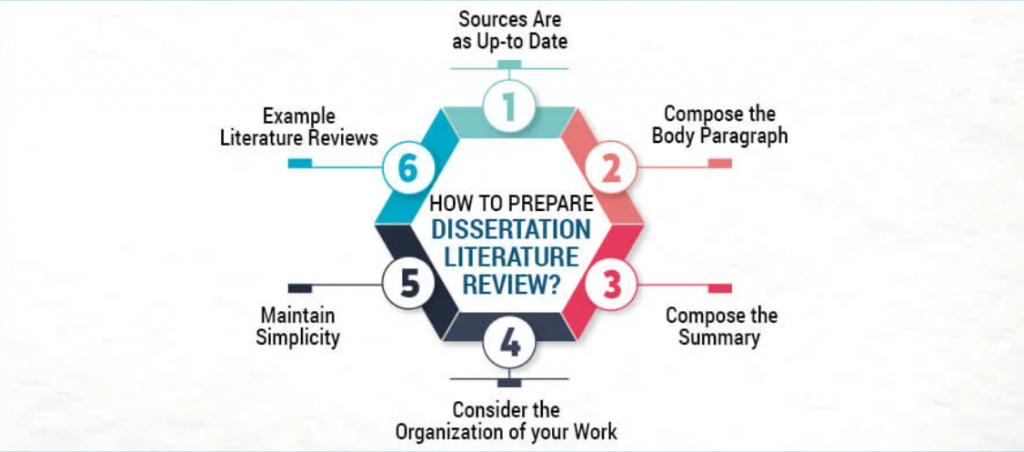Your dissertation literature review is more than just a summary of existing research; it's the foundation upon which your entire argument rests. It's a crucial chapter, showcasing your understanding of the field, establishing the significance of your research, and providing the context for your own contribution. Crafting a compelling dissertation literature review takes time, effort, and a strategic approach.
This guide will equip you with the essential tools and techniques to write a stellar literature review that truly shines.
Steps to Crafting a Compelling Dissertation Literature Review
1. Defining the Scope and Focus:
Before diving into the vast ocean of existing research, you need a compass. Define the specific scope and focus of your dissertation literature review. What are the key themes and concepts you'll explore? What geographical, temporal, or disciplinary boundaries will guide your search? Defining these parameters early on will prevent you from drowning in irrelevant information.
2. Comprehensive and Critical Reading:
A strong dissertation literature review goes beyond simply summarizing research findings. You need to critically engage with the existing literature. Read actively, asking questions about each source: What are its strengths and limitations? How does it relate to other studies in the field? What are the key gaps in knowledge that your research aims to address?
3. Establishing Your Research Question:
The dissertation literature review should flow organically toward your research question. This is not just a list of findings, but a compelling narrative that builds toward your own contribution. Use the existing research to illuminate the gap in knowledge that your dissertation will address, making your research question feel inevitable and necessary.
4. Organizing and Structuring the Literature Review:
A chaotic dissertation literature review leaves the reader lost at sea. Choose a clear and logical structure to guide your reader through the existing research. You might organize by theme, chronological order, or a combination of both. Use headings and subheadings to create visual breaks and make the review more digestible.

5. Beyond Summary: Analysis and Synthesis
The goal of your literature review is not merely to summarize what others have said. You need to analyze and synthesize the existing research, identifying common threads, contradictions, and emerging trends. This requires critical thinking, engaging with the nuances of different perspectives, and ultimately drawing your own conclusions about the current state of knowledge in the field.
6. The Art of Citing Effectively:
How you cite sources is critical for establishing credibility and avoiding plagiarism. Use consistent formatting throughout your literature review and follow the guidelines of your chosen citation style (e.g., APA, MLA, Chicago).
7. Identifying Gaps and Opportunities:
A powerful dissertation literature review should highlight the gaps and opportunities in the existing research. This is where you demonstrate your critical thinking and lay the foundation for the unique contribution your dissertation will make. Identify the limitations of previous studies and outline the potential implications of your own research.
8. The Importance of Clarity and Conciseness:
While the dissertation literature review is crucial, it's not the centerpiece of your dissertation. Aim for clear, concise language that avoids unnecessary jargon and avoids over-explaining. This will ensure your reader grasps the key points and moves smoothly into the later sections of your work.
9. From Literature Review to Research Proposal:
A well-written dissertation literature review serves as a blueprint for your research proposal. The gaps and opportunities you identify should directly inform the goals and methodology of your study. Ensure your research questions and methodology align with the existing literature and contribute to the larger conversation in the field.
10. Feedback and Revision:
Don't underestimate the importance of feedback! Share your dissertation literature review with your advisor, peers, or other experts in the field. Seek their input on clarity, organization, and the strength of your arguments. Be open to suggestions and revise accordingly.
11. The Importance of Primary Sources:
While secondary sources provide valuable overview and context, don't neglect the power of primary sources. Incorporating primary sources like interviews, original data, or historical documents can lend depth and richness to your dissertation literature review, enriching the overall narrative and showcasing your expertise.
12. The Dissertation Literature Review: A Foundation for Success
A well-crafted dissertation literature review acts as the foundation upon which your dissertation will be built. It demonstrates your understanding of the field, establishes the significance of your research, and paves the way for your own original contribution. By investing time and effort in this crucial chapter, you will set yourself up for success in writing a compelling and impactful dissertation.

Avoiding Common Pitfalls in Your Dissertation Literature Review
The dissertation literature review is a crucial component of your academic journey. It's not just about summarizing existing research; it's about building a compelling argument for your own contribution to the field. However, the process can be fraught with pitfalls that can derail your progress.
Here we delve into some common mistakes and offer practical strategies to avoid them, ensuring your dissertation literature review stands out as a robust and insightful foundation for your research.
1. The Pitfall of Overwhelming Scope:
One common error is attempting to cover too much ground. Your dissertation literature review should focus on a specific and well-defined area within your field. Trying to encompass every relevant study will leave you with a fragmented and unfocused review.
Solution: Narrow your scope to a specific research question or problem. Identify key concepts, theories, and methodologies that directly relate to your topic. By focusing on a smaller, more manageable area, you can delve deeper into the existing research and provide a more nuanced analysis.
2. The Pitfall of Superficial Coverage:
Another common mistake is simply summarizing existing research without offering any critical analysis. A dissertation literature review should go beyond mere description and provide a critical evaluation of the literature.
Solution: Engage with the literature by analyzing strengths and weaknesses, identifying gaps in existing knowledge, and highlighting inconsistencies or conflicting findings. This will demonstrate your critical thinking skills and provide a clear justification for your own research question.
3. The Pitfall of Ignoring Contradictory Evidence:
It's easy to fall into the trap of only presenting evidence that supports your own argument. However, a truly comprehensive dissertation literature review acknowledges both supporting and contradicting evidence.
Solution: Be transparent about any conflicting findings. Address these discrepancies and discuss potential explanations for the variations. This will show that you have a nuanced understanding of the literature and are willing to acknowledge limitations in the research.
4. The Pitfall of Lacking Organization and Structure:
A poorly organized dissertation literature review will confuse your reader. The literature should be structured logically, leading to a clear and compelling argument.
Solution: Develop a clear framework or theme for your review. Group studies by their theoretical perspective, methodology, or findings. Use headings, subheadings, and transitions to guide the reader through your argument.
5. The Pitfall of Ignoring Recent Developments:
Staying current with the latest research is essential. A dissertation literature review should include the most recent findings in your field.
Solution: Utilize databases and online resources to identify the most recent publications. Include research published within the past five years, especially if your topic is rapidly evolving.
6. The Pitfall of Failing to Connect the Literature to Your Research:
Ultimately, your dissertation literature review should set the stage for your own research. The review should clearly demonstrate how your work builds upon, challenges, or extends existing knowledge.
Solution: Throughout the review, emphasize the relevance of each study to your own research question. Use transition phrases to highlight how previous findings inform your research and provide a justification for your approach.
Avoiding these common pitfalls requires careful planning, critical thinking, and a commitment to engaging deeply with the existing literature. By following these strategies, your literature review will become more than a mere summary; it will be a powerful tool for establishing your credibility as a scholar and setting the foundation for your own original contribution to the field.

The Bottom Line
Crafting a stellar dissertation literature review is a journey, not a sprint. It requires careful planning, meticulous reading, critical thinking, and a commitment to making your research relevant and engaging. By following the guidelines outlined above, you can ensure your dissertation literature review is not just a summary of existing research, but a compelling and insightful contribution to the field. Remember, a strong literature review is more than just a chapter; it's a testament to your scholarly abilities and sets the stage for the impact your research will have.
Get Professional Dissertation Writing Service
Crafting a compelling dissertation literature review can be a daunting task. However, there is no reason to worry because at Exemplary Dissertations, we can help you to write original and impactful dissertations for excellent results. Our service covers topic suggestion, dissertation writing, proofreading, editing, formatting and plagiarism removal. Besides, we can also assist you with writing essays, research papers and case studies.